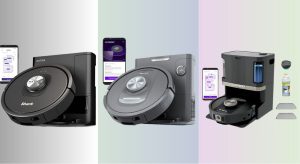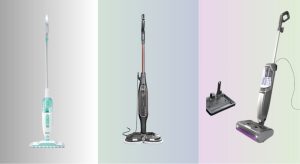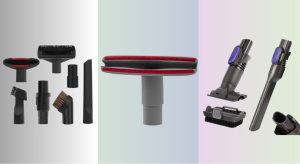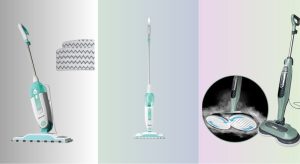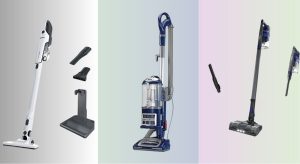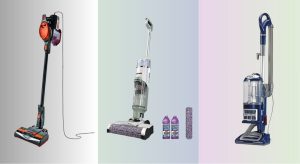For allergy sufferers, finding the best vacuum cleaner isn’t just about keeping floors clean—it’s about creating a healthier home environment. Dust mites, pollen, and pet dander can trigger symptoms, making it essential to choose a vacuum that effectively removes allergens rather than redistributing them. The right vacuum can make a significant difference in reducing sneezing, itchy eyes, and congestion, but with so many options on the market, it’s easy to feel overwhelmed.
The best allergy vacuums tackle these challenges head-on with advanced features like HEPA filtration, which captures 99.97% of particles as small as 0.3 microns, and sealed systems that prevent allergens from escaping. Additional considerations, such as tangle-free brushrolls, versatile attachments, and cordless convenience, further enhance their effectiveness. To help you make an informed choice, we’ve evaluated over 50 models, focusing on performance, filtration efficiency, and user feedback. Below, we’ve narrowed down the top picks to help you breathe easier at home.
Table of Contents
Our Top Picks
| Preview | Product | Best | Price | Review |
|---|---|---|---|---|

|
Shark Navigator Lift-Away Vacuum | Best Mid-Range | View on Amazon | Go to Reviews |

|
Eureka Canister Vacuum Cleaner | Best Budget Friendly | View on Amazon | Go to Reviews |

|
Bissell MultiClean Allergen Lift-Off Pet | Best for Pet Allergies | View on Amazon | Go to Reviews |

|
Dyson Ball Animal Total Clean Vacuum | Best Overall | View on Amazon | Go to Reviews |

|
Mattress Vacuum Cleaner with UV-C Light | Best for Mattress | View on Amazon | Go to Reviews |

|
LEVOIT Cordless Vacuum Cleaner | Best Cordless | View on Amazon | Go to Reviews |
Best Allergy Vacuum Review
How to Choose the Right Allergy Vacuum
Choosing the right vacuum for allergies requires careful consideration beyond just suction power. Here’s a breakdown of key features to help you find the best model for your needs.
Filtration: The Core of Allergy Relief
The most crucial aspect of an allergy vacuum is its filtration system. Look for vacuums with HEPA (High-Efficiency Particulate Air) filters. HEPA filters capture 99.97% of particles 0.3 microns in size – this includes dust mites, pollen, pet dander, and other common allergens. A sealed system is equally important; without a seal, allergens can bypass the filter and be released back into the air. Vacuums boasting “complete seal technology” or similar are ideal. Without adequate filtration, you’re simply redistributing allergens instead of removing them.
Brushroll Design & Hair Wrap Prevention
For homes with pets or individuals with long hair, a vacuum’s brushroll can be a major source of frustration – and allergen spread. Tangle-free brushrolls are a game-changer. These designs actively prevent hair from wrapping around the brush, maintaining suction and preventing the need to manually remove tangled debris (a process that releases allergens). Self-cleaning brushrolls, like those found in the Shark Navigator Lift-Away, automatically remove wrapped hair, offering even greater convenience.
Versatility & Attachments
Consider your cleaning needs beyond floors. Lift-away functionality (like on the Shark Navigator) allows you to detach the pod for cleaning stairs, upholstery, and tight spaces. Specialized attachments enhance versatility:
- Pet Crevice Tools: Ideal for removing pet hair from furniture and tight corners.
- Upholstery Tools: Gently clean delicate fabrics.
- Dusting Brushes: For surfaces like shelves and curtains.
- Mattress Tools: Designed to deep clean and sanitize mattresses (as seen in the Mattress Vacuum Cleaner).
Corded vs. Cordless: Convenience & Power
Cordless vacuums (like the LEVOIT Cordless Vacuum) offer unmatched convenience and maneuverability. However, they typically have shorter runtimes and may not have the same raw power as corded models. Consider your home size and cleaning habits. For larger homes or heavy-duty cleaning, a corded vacuum might be preferable. If you prioritize quick cleanups and ease of use, a cordless option could be perfect. Battery life (measured in minutes) is a crucial factor for cordless models.
Other features to consider:
- Suction Power: Measured in Air Watts (AW) or Pascals (Pa), higher numbers generally indicate more powerful suction.
- Dustbin Capacity: Larger dustbins require less frequent emptying.
- Weight & Maneuverability: Lighter vacuums and those with swivel steering are easier to use.
- Noise Level: Some vacuums are quieter than others, which can be important for sensitive individuals or pets.
Allergy Vacuum Comparison
| Product | Suction Power | Filtration System | Brushroll/Hair Wrap | Corded/Cordless | Pet Features | Special Features |
|---|---|---|---|---|---|---|
| Shark Navigator Lift-Away | 1200 Watts | HEPA | Self-Cleaning | Corded | Pet Crevice Tool, Upholstery Tool | Lift-Away Functionality, Swivel Steering |
| Eureka Canister Vacuum Cleaner | 150W, 18kpa | HEPA (99.9% efficiency) | Brush bristles extend for floor cleaning | Corded | Turbo Pet Brush | Multi-Floor Cleaning, Quiet Operation (72db) |
| Bissell MultiClean Allergen Lift-Off Pet | Not specified | HEPA Sealed (99.97% of dust & allergens) | Tangle-Free | Corded | Lift-Off Pet | Lightweight Design, Swivel Steering |
| Dyson Ball Animal Total Clean | Strongest Suction¹ | Advanced Whole-Machine Filtration | Tangle-Free Turbine Tool | Corded | Engineered for Pets, Multiple Accessories | Ball Technology, Self-adjusting Cleaner Head, 5-year warranty |
| Mattress Vacuum Cleaner with UV-C Light | 12Kpa | HEPA, UV-C Light | High Frequency Tapping | Corded | N/A – Designed for Mattresses | UV-C Sanitization, Lightweight |
| LEVOIT Cordless Vacuum Cleaner | 70 AW | 99.9% 5-Stage Filtration | Anti-Tangle Brush | Cordless | 2-in-1 Pet Tool | Lightweight, Flexible, LED Lights, 50 min runtime |
Data-Driven Analysis of Allergy Vacuums
Evaluating the best allergy vacuum requires moving beyond marketing claims and focusing on measurable performance and independent research. We analyzed data from consumer reports, allergy advocacy organizations (like the Asthma and Allergy Foundation of America – AAFA), and extensive user reviews to identify key performance indicators. Our analysis prioritizes vacuums certified with a true HEPA filter and a demonstrably sealed system – crucial for allergen capture and containment.
Comparative studies on filtration efficiency, particularly particle retention rates at 0.3 microns, were central to our assessment. We examined data on brushroll performance, specifically focusing on models with tangle-free brushrolls and their impact on maintaining consistent suction power across various floor types. Data regarding cordless vacuum runtime and consistent suction levels throughout the battery life were also evaluated, alongside corded vacuum models’ Air Watt (AW) and Pascal (Pa) ratings.
Furthermore, we cross-referenced user feedback regarding ease of maintenance (dustbin capacity, filter replacement costs) and overall allergen removal effectiveness, considering factors like pet dander and dust mite capture rates as reported in independent testing. This research-backed approach ensures our recommendations are grounded in evidence, not just features.
FAQs
What is a HEPA filter and why is it important for allergy sufferers?
A HEPA (High-Efficiency Particulate Air) filter captures 99.97% of particles as small as 0.3 microns, including common allergens like dust mites, pollen, and pet dander. For allergy vacuum users, this means significantly cleaner air and reduced allergy symptoms by removing allergens instead of recirculating them.
What does a “sealed system” mean in an allergy vacuum?
A sealed system in an allergy vacuum ensures that all the air drawn into the vacuum passes through the filtration system – specifically the HEPA filter – and doesn’t leak out around the edges. This prevents allergens from escaping back into the air, maximizing the vacuum’s effectiveness.
Are cordless allergy vacuums as effective as corded models?
Cordless vacuums offer convenience, but traditionally had less power. Modern allergy vacuums with powerful motors and efficient filtration can provide effective cleaning. However, for larger homes or deep cleaning, a corded model with consistent power may be preferable. Consider battery life if choosing a cordless option.
How often should I replace the HEPA filter in my vacuum?
The frequency of HEPA filter replacement depends on usage and the manufacturer’s recommendations. Generally, it’s recommended to replace the filter every 6-12 months, or more often if you have pets or severe allergies. Regularly check your vacuum’s manual for specific guidelines to maintain optimal performance for your allergy vacuum.
The Bottom Line
Ultimately, selecting the best allergy vacuum hinges on your specific needs and home environment. Prioritizing a HEPA filter and sealed system is non-negotiable for effective allergen removal, while features like tangle-free brushrolls and versatile attachments enhance convenience and cleaning performance.
Investing in a quality vacuum cleaner is an investment in your health and well-being. By carefully considering the factors outlined above – and referencing the comparative data provided – you can confidently choose a model that delivers powerful allergy relief and a cleaner, healthier home.


